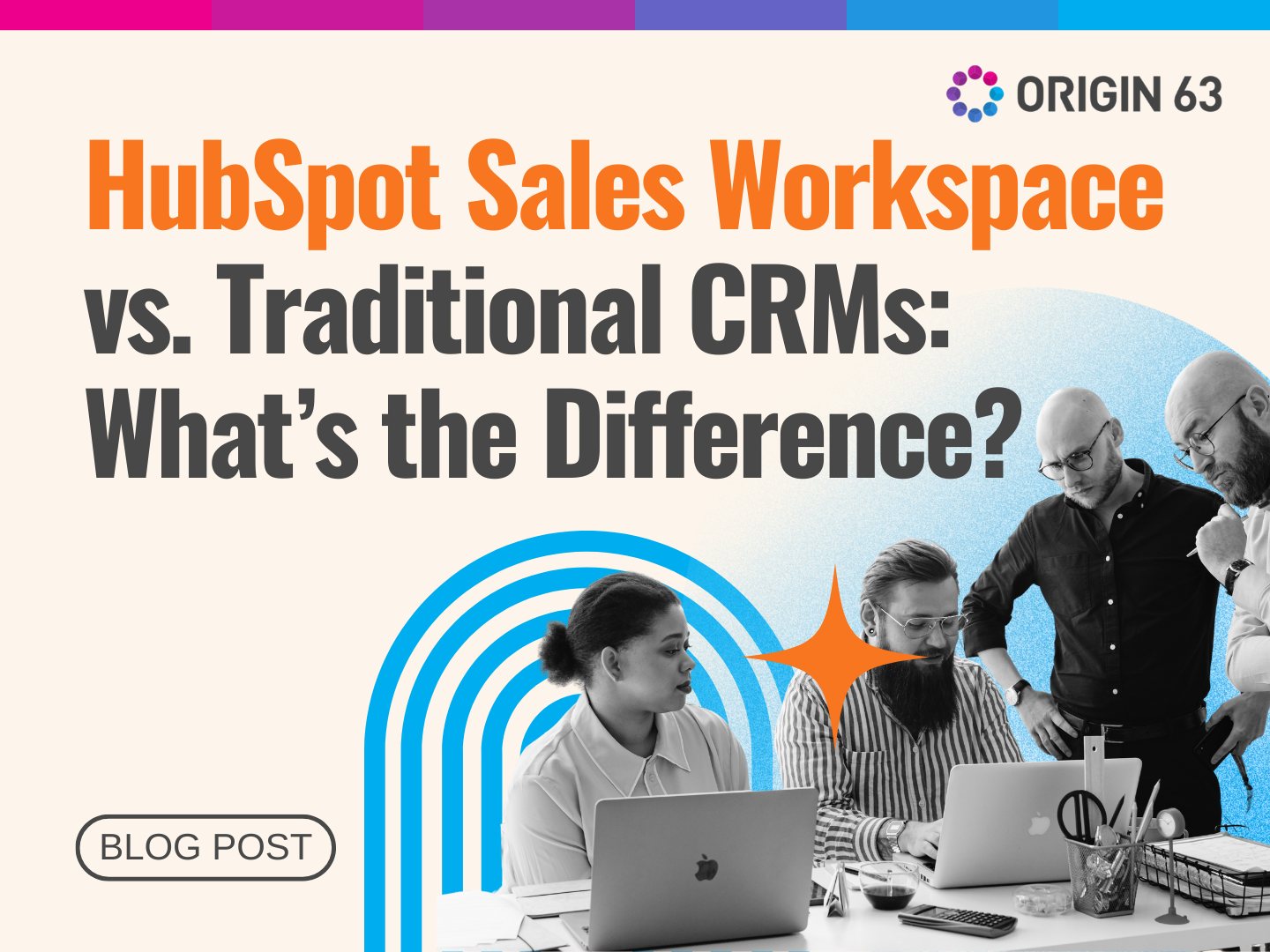When customer data lives in disconnected systems, these conversations become harder than they need to be. Reps waste time switching between tools, important details get missed, and customers end up repeating themselves.
Aircall and HubSpot solve this by working together as one unified system. Aircall handles all your calling needs while HubSpot keeps your customer records organized and up to date.
In this blog, we'll show you how manufacturers can use Aircall and HubSpot together to improve communication, save time, and deliver better customer experiences.
Why Manufacturing Companies Need Connected Communication Tools

Manufacturing teams talk to a lot of people every day. Sales reps call distributors and potential customers. Field service teams check in with clients about equipment repairs. Customer support handles technical questions about products.
Each of these conversations matters, but if the details aren't captured somewhere, they disappear. A rep might forget to log a call. A field tech might not have time to update the CRM after a site visit. When this happens, the next person who talks to that customer starts from scratch.
This creates frustration for both your team and your customers. Over 70% of customers say they're much more likely to do business with a company that has a great reputation for quality customer service.
If your teams can't access the full customer story during a call, that reputation is at risk. Aircall and HubSpot fix this by connecting your phone system directly to your CRM.
Call logs are automatic. Customer details appear on screen as soon as the phone rings. Your team works faster, and your customers get better service.
What Is HubSpot's Smart CRM?
HubSpot's Smart CRM is the foundation of your customer data. It stores all your contacts, companies, deals, and tickets in one place so your entire team works from the same information.
Unlike spreadsheets or disconnected tools, HubSpot keeps everything organized and easy to find. When a customer calls, you can pull up their full history in seconds. You'll see past orders, open support tickets, recent conversations, and any deals in progress.
This visibility matters because manufacturing sales cycles are often long and involve multiple touchpoints. A customer might talk to sales, then service, then sales again before making a decision. With HubSpot, everyone on your team sees the same story, so customers never have to repeat themselves.
HubSpot also makes it easy to keep data clean and up to date. You can set up automation to remove duplicates, update contact details, and trigger follow-up tasks. This means less manual work for your team and more time spent actually helping customers.
How Aircall and HubSpot Data Sync Works

Aircall's integration with HubSpot uses data sync to keep your calling activity and customer records connected in real time.
This isn't just a one-way connection where data flows from Aircall to HubSpot. It's bi-directional, meaning updates in either system automatically appear in the other.
Here's how it works in practice:
1. Two-Way Data Sync
When you connect Aircall and HubSpot, contact information flows seamlessly between both platforms.
If a rep adds a new phone number to a contact in HubSpot, that number becomes available in Aircall right away. If a customer calls from a number that matches a contact in HubSpot, Aircall recognizes them instantly.
This two-way sync keeps your team from having to update information in multiple places. Everything stays consistent across both systems without extra effort.
2. Automatic Call Logging
Every call made or received through Aircall automatically logs to the right contact, company, deal, or ticket in HubSpot. This includes details like call duration, who made the call, and whether it was answered or missed.
For manufacturers, this is especially valuable. Field service reps can call customers directly from their mobile devices, and those calls log to HubSpot without any manual steps.
Sales reps can review call history before reaching out again. Managers can track team activity and measure performance without asking for updates.
Nearly 87% of contact centers say their most important metric is customer satisfaction. Automatic call logging helps you measure and improve satisfaction by giving you complete visibility into every customer interaction.
3. Historical Data Syncing
When you first set up the integration, Aircall doesn't just sync new calls going forward. It also brings in your existing contact data, so you start with a complete picture.
This matters because manufacturers often have years of customer relationships already documented. You might have contact records dating back months or even years, with notes about past orders, service history, and preferences.
Historical syncing ensures none of that context disappears when you switch to the integration.
Your team can begin using Aircall and HubSpot together right away without losing any of the customer knowledge you've built up over time. Everything transfers over smoothly, so reps have the full story from day one.
How Custom Insight Cards Improve Every Call

One of the most powerful features of the Aircall and HubSpot integration is Insight Cards. These are customizable pop-ups that appear in Aircall whenever a call comes in or goes out.
They show key information about the contact, company, deal, or ticket so your reps have instant context.
What Insight Cards Show
- Contact Insight Card: Displays details about the person calling or being called, like their name, email, company, and contact owner. If multiple contacts share the same phone number, Aircall shows the most recently updated contact.
- Company Insight Card: Shows company information if the phone number matches a company record in HubSpot. This is helpful when a customer calls from a main office line instead of a direct number.
- Deal Insight Card: Displays details from the most recent deal associated with the contact, including deal name, amount, stage, and pipeline. This helps sales reps stay on top of active opportunities without switching tabs.
- Ticket Insight Card: Shows information from the most recent support ticket, including ticket status, owner, and pipeline. Service teams can see if the customer has an open issue before they even answer the call.
Customizing Insight Cards
HubSpot admin users can customize which fields appear on each Insight Card. You can choose up to five attributes per card, tailoring the information to what your team needs most.
For example, a manufacturing sales team might want to see the deal stage, amount, and last meeting activity on the Deal Insight Card. A service team might prioritize ticket status, number of times contacted, and ticket owner on the Ticket Insight Card.
You can also turn off any card type that your team doesn't use. If your team doesn't track tickets in HubSpot, you can simply hide the Ticket Insight Card so it doesn't clutter the screen.
This flexibility means every team gets the exact information they need, right when they need it.
How HubSpot Operations Hub Enhances the Integration

While the basic Aircall and HubSpot integration is powerful on its own, adding HubSpot Operations Hub takes it even further. Operations Hub is designed to help businesses manage data, automate processes, and keep all their tools connected.
Here's how it strengthens the Aircall integration:
Keep All Your Tools Connected
Most manufacturing companies use more than just Aircall and HubSpot. You might have an ERP system for inventory, a billing platform for invoicing, and a support tool for ticketing.
Operations Hub makes it easy to connect all of these systems so data flows smoothly between them.
For example, if a customer calls about an overdue invoice, your rep can see billing details from your ERP right inside HubSpot. If a field tech calls a customer after a service visit, they can log notes in HubSpot that automatically sync to your service management system.
Operations Hub supports over 100 integrations, and setup doesn't require any coding. You just choose the apps you want to connect, map the fields, and let HubSpot handle the rest.
Automate Data Updates Across Systems
When customer information changes in one system, it should be updated across all systems. Operations Hub makes this happen automatically. If a contact updates their email address in HubSpot, that change syncs to Aircall, so future calls go to the right person.
If a deal closes in HubSpot, your billing system can trigger an invoice without manual data entry.
This kind of automation saves your team hours every week and reduces the risk of errors. It also means your AI tools and reporting dashboards always work with accurate, up-to-date information.
Monitor and Manage Your Integrations
Operations Hub gives you visibility into how your integrations are performing. You can see which records are syncing successfully, identify any issues before they cause problems, and resolve errors with guided troubleshooting.
This is especially important for manufacturers who rely on connected systems to keep operations running smoothly. If a sync breaks, you'll know right away and can fix it before it impacts your team or your customers.
Real-World Benefits for Manufacturing Teams

The Aircall and HubSpot integration delivers tangible benefits for manufacturers. Here are a few ways it helps teams work better and serve customers faster:
Faster Response Times
When a customer calls, your rep sees their full history instantly. They know if there's an open support ticket, a pending order, or an active deal. This context means they can answer questions faster and resolve issues without transferring the call or putting the customer on hold.
Better Collaboration Across Teams
Sales, service, and operations teams often work in silos. Sales doesn't know about service issues. Service doesn't know about active deals. Aircall and HubSpot break down these silos by giving everyone access to the same customer information.
For example, if a field service rep notices a customer is unhappy during a call, they can leave a note in HubSpot that the sales team will see before their next check-in. If a sales rep closes a deal, the service team can see it and reach out proactively to schedule installation.
More Productive Field Teams
Field service reps are often on the road, which makes it hard to log calls and update customer records. With Aircall's mobile app and automatic call logging to HubSpot, reps don't have to worry about it.
Calls are logged automatically, and they can pull up customer details on their phone before they arrive on site.
This keeps field teams productive without adding extra admin work. They spend more time with customers and less time on paperwork.
Cleaner, More Reliable Data
When calls are logged automatically and data syncs in real time, your CRM stays cleaner. You don't have to worry about reps forgetting to log a call or entering information inconsistently.
Everything is captured the same way every time, which makes reporting more accurate and gives your team data they can trust.
How to Get Started with Aircall and HubSpot

Alt Image Text: How to Get Started with Aircall and HubSpot
Setting up the integration between Aircall and HubSpot is straightforward. Here's how to do it:
Step 1: Connect Aircall to HubSpot
Go to the HubSpot App Marketplace and search for Aircall. Click Install and follow the prompts to log in to your Aircall account. Once connected, you'll be redirected to the Aircall Dashboard to configure your settings.
Step 2: Choose Your Sync Settings
Decide which data you want to sync between Aircall and HubSpot. The integration comes with default field mappings already set up, so most of the work is done for you. If you need to customize mappings, you can do so from the settings page.
You can also choose whether to sync only new calls going forward or include historical data from Aircall.
Step 3: Customize Your Insight Cards
Go to the Insight Cards section in the Aircall Dashboard settings. Choose up to five attributes to display on each card type. You can customize Contact, Company, Deal, and Ticket Insight Cards independently.
If your team doesn't use certain cards, you can turn them off. This keeps the interface clean and focused on what matters most.
Step 4: Set Up Call Logging and Ticket Creation
Decide how you want calls to log in to HubSpot. You can set rules so certain types of calls automatically create tickets, update deals, or trigger follow-up tasks. This automation keeps your team from having to manually update HubSpot after every call.
Step 5: Train Your Team
Once the integration is live, make sure your team knows how to use it. Show them how to access Insight Cards during calls, where to find call logs in HubSpot, and how to customize their views if needed.
The more comfortable your team is with the tools, the more value they'll get from them.
Why Manufacturers Should Invest in Connected Tools
Manufacturing is a relationship-driven industry. Whether you're selling equipment to distributors or supporting customers with field service, every interaction matters.
If your team can't access the right information during those interactions, opportunities get missed and customers get frustrated.
Aircall and HubSpot solve this by connecting your communication tools directly to your customer data. Calls are logged automatically. Customer details appear instantly. Your team collaborates better. And your customers get the fast, informed service they expect.
Make Your Communication Smarter
Ready to connect your calling and customer data? Origin 63 helps manufacturers set up and optimize Aircall and HubSpot so you can start seeing results right away. We'll guide you through the setup, customize your Insight Cards, and make sure your team knows how to use the tools.
Talk to Origin 63 today and start turning every call into an opportunity to build stronger customer relationships.




.png)
.png)








.png?width=90&height=90&name=Arrows%20Partner%20Badge-test%20(1).png)

